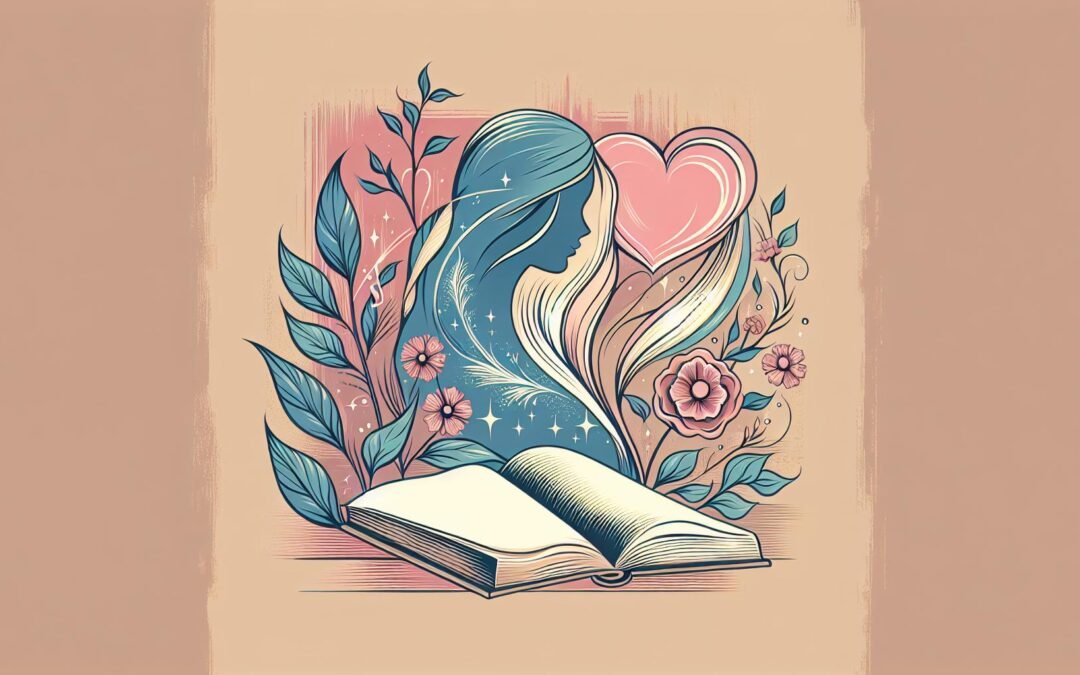Deep love poems for her reveal an evolving tradition shaped by history, language, and the nuances of intimacy. The thematic arc stretches from ancient ritual verse to the current surge of individual voices. Sappho’s lyric fragments, translated and reimagined, echo in the rhythmic innovations of modern writers. For readers drawn to contemporary approaches, new poetic horizons illuminate the emotional depth and complexity found in these works.
Historical Developments and Lexical Innovation in Deep Love Poems for Her
The earliest documented romantic verse originates in Sumer, where hymns to Inanna sometimes entwine devotion with longing. Early Egyptian poems, usually anonymous, focus on emotional yearning and fleeting encounters. Greek lyric poetry introduces precise expressions of desire, especially in the surviving stanzas of Sappho. These writers did not invent a universal language of love but contributed distinct voices, grounded in their particular cultures and concerns.
Medieval European poets such as the troubadours articulated the anxieties and allure of affection for the unattainable beloved. Their songs and poems use repetition and layered vocabulary to emphasize intense yearning and emotional risk. The sonnet emerges as a memorable form in Renaissance Italy, especially with Petrarch, who explores complex feelings through paradox, exaggerated praise, and elaborate conceits. Shakespeare’s sonnets dissect affection and attraction in physical, spiritual, and intellectual terms, merging philosophical questions with sharp clarity of image.
Shifting Sensibilities and Expanding Canons
The Romantic poets infuse sensibility and layered sensuality, using detailed imagery to express longing and existential search. The nineteenth and twentieth centuries witness transformation as more writers, especially women and queer poets, speak directly about affection and identity. Adrienne Rich’s sequence and Audre Lorde’s reflections on desire reclaim subjectivity and language for the feminine and the marginalized. As poetic forms evolve, technology and translation increase accessibility, bringing together varied voices and broadening the canon. For examples of formal diversity, visit collections that highlight renowned poems addressing intimacy in bold, original words.
Modern writers foreground emerging motifs such as diaspora, intersection, and the complexities tied to naming the beloved. Queer identities contribute richness to the tradition, with poems now reflecting multiple forms of belonging and alienation. Digital sharing and online platforms have made these poems visible to wider audiences, blending contemporary vernaculars with established patterns. Resources at poetic form anthologies expose readers to this vibrant intersection of tradition and innovation.
Defining Emotional Resonance and Thematic Motifs
Emotional resonance in this tradition separates rich feeling from surface admiration. Poems that focus only on the beloved’s appearance or catalogue virtues may appear flat. In contrast, successful poems move into complex interior spaces, showing vulnerability, memory, and uncertainty. These works address the tension between longing and the awareness that some desires remain unfulfilled. Visit pages showcasing fresh approaches to explore how emotion shapes language.
Philosophical traditions investigate these themes, as does psychology. While Plato’s dialogues discuss desire and affection, later writers such as bell hooks focus on love as transformative action. Psychological perspectives add depth, tracing connections among trust, apprehension, and hope. In this context, poems dealing with these layers find real resonance not by reassuring, but by reflecting the unpredictable complexity of affection.
Loyalty, Exposure, and Reach Beyond the Self
Loyalty and endurance appear as foundations in poems devoted to her. Devotion asserts itself in absence, through time, or faced with obstacles. Vulnerability emerges as confessions, hesitant admissions, and unguarded revelation. This honesty supplies both intensity and realism, anchoring grand themes in small, precise gestures. Transcendence materializes in expressions of desire for unity or moments when distinction between self and beloved blurs through shared experience.
Writers employ various strategies to articulate these themes. Structural invention can intensify the effect, as does precise choice of vocabulary. When poems embrace expansive diction and archaisms, they evoke a sense of tradition; neologisms, on the other hand, suggest innovation. The use of metaphors and similes forges unexpected links between feeling and physical world, drawing new sensory connections. For additional resources on crafting distinctive language, see guides that discuss poetic vocabulary.
Devices of Metaphor, Sound, and Sensory Complexity
Metaphorical language in these poems creates openings for interpretation, moving beyond literal description. Metaphors like “her laughter is spilled honey on warm stone” entice the senses, pairing emotion with tactile, visual, and even gustatory elements. Simile clarifies similarities while recognizing difference; for example, “her voice, soft as rainfall on clover, coaxed sleep from uneasy dreams.” Poets sometimes deploy synesthesia, such as tasting a color or hearing a scent, which creates sensory tension and underscores the layered feeling of love poetry.
Word choice remains critical. The blend of traditional and contemporary diction, alongside well-placed archaisms or coined terms, stretches the expressive range. Alliteration, assonance, and consonance imbue lines with music, influencing rhythm and emotional pace. Formal structure also plays a role, as seen in sonnets, villanelles, and ghazals, but free verse allows emotion to dictate rhythm and space.Keats, Gwendolyn Brooks, and Mei-mei Berssenbrugge experiment with these devices to shape feeling and perception in new ways.
Some contemporary authors draw upon technological and digital imagery, placing affection in the world of screens, messages, and evolving communication. These poems reference familiar forms but root their impact in present realities. For a deeper look at current innovation, consult major nonprofit literary organizations for profiles and verse by living poets.
Themes of Femininity, Agency, and Intersection
Addressing the beloved as “her” often situates the poem within gendered experience. Poets choose language and imagery to convey agency, tenderness, or power, depending on voice and perspective. Some works reverse traditional muse dynamics, allowing the beloved to occupy space as subject rather than object. This shift materializes in poems depicting everyday acts—the glance, hesitation, or resolute choice—reframed as meaningful within the relationship’s context.
The tradition now encompasses poems navigating femininity, empowerment, and shifting roles. Lucille Clifton and Adrienne Rich integrate voice and agency, refusing simple binary patterns. Intersectional poets explore how love confronts or engages with race, sexuality, and culture. Ocean Vuong, Audre Lorde, and others entwine longing with memory and resistance, exploring the ways physical and spiritual realities intersect. Reading through recent anthologies reveals these transformations in tone, form, and theme.
In the contemporary moment, deep love poems for her reflect lived experience and heritage. These works draw on myth, vernacular, and hybrid structures. Form and content entwine, with poets using experiment and rootedness to reshape what it means to speak to, or about, the beloved. No singular method defines the field; variation prevails, balancing invention with respect for tradition.
Emotional Authenticity, Sincerity, and Exemplary Poems
Sincerity characterizes the strongest contributions within the genre. Poets select details that engage, such as a chipped cup or tremor in a voice, rather than reverting to overstatement. This attention to ordinary moments grounds feeling in authenticity. The careful balance between openness and subtlety allows idiosyncratic gestures to gain universal resonance, inviting connection without sentimentality.Works curated by contemporary editors frequently spotlight this quality, demonstrating how poets oscillate between intimate confession and broader reflection.
Close Analyses: Models of Craft
Wilfred Owen’s “Greater Love” uses the interplay between martial and erotic vocabulary to confront sacrifice and longing. The repeated mention of “red” in lips and stones binds sensuality to mourning. In contrast, Adrienne Rich in “Twenty-One Love Poems” centers the materiality and immediacy of presence, compressing years of longing into single moments embodied by phrases like “clay and rose-leaf.” Sharon Olds, Sylvia Plath, and other major voices document contradictions and ambiguities, allowing imperfection and uncertainty to surface as marks of authentic passion. New readings and critical analysis are available at the Poetry Society and similar resources, giving context for close study and appreciation.
In all periods, the poems that most fully realize emotional complexity do so by fusing lexical variety, metaphorical imagination, and a willingness to expose contradiction. As sensibilities shift, so do the strategies that poetic language uses to capture and transmit new realities in writing addressed to her. The best poems feel simultaneously ancient and contemporary, balancing expressive invention with subtle observation. Skimming through collections of nighttime verse and celebratory poems broadens the spectrum, from tenderness to longing, demonstrating that the field remains vital, diverse, and endlessly renewable.

